Porcelain Insulator News
by Elton Gish
Reprinted from "Crown Jewels of the Wire", July 2005, page 48
The Elusive Thomas M-3890
M-3890 is a monster of a porcelain insulator and one of the largest ever
manufactured. The insulator was designed based on the C. C. Chesney patent,
761,760 granted on June 7, 1904, which covers the lily-shell shape of the
skirts. M-3890 was used on the Niagara, Lockport and Ontario Power Co. line that
operated at 60,000 volts. The line was placed in operation in July 1906. The two
lily-shell skirts makes it very attractive and with an early Thomas glaze it
could easily be one of the most sought-after multiparts. There are several
M-3890's in a powerhouse museum in Idaho mounted on the ceiling. In 1901, Ron
Yuhas found the first M-3890 in captivity at a yard sale. It has a beautiful
mottled reddish Thomas glaze with lighter mustard areas. The original owner
decided to make a water fountain out of it had tried to drill a hole down
through the top. He actually drilled down about 5-6" before giving up. It
has a couple of chips on the skirts but still a beautiful insulator.
|
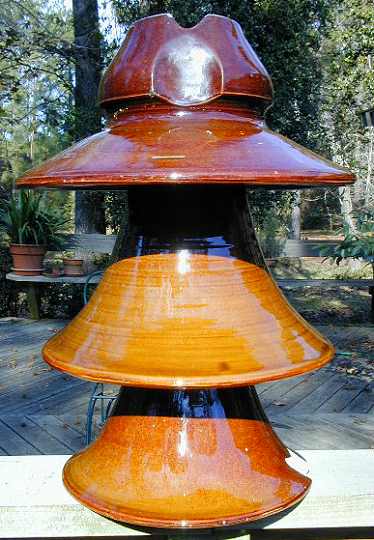
|
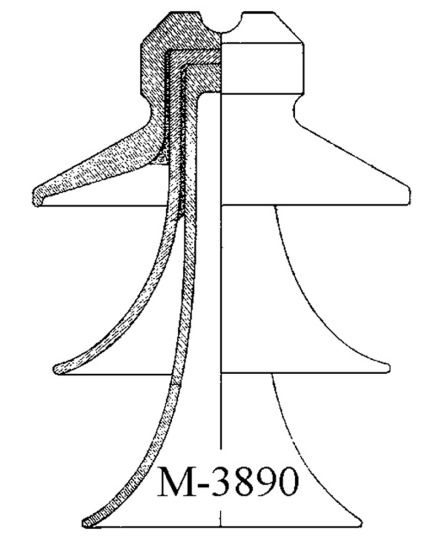
14.5 - 12.5 - 10.5 X 19
|

Note that the insulator had a much different crown than M-3890 and the height
is 1" taller. I decided to assign M-3890A to this specimen. So far no
specimens of M-3890 have been reported that match the catalog drawing. This same
style of M-3890 is shown in an early Thomas catalog.
We do know New Lexington made M-3890 with that same type of crown. Jack
Tod gave me a crown with the New Lexington marking. He sent a note ahead of
the box arriving saying he was sending me a near mint insulator. As you can see,
it is just the crown. The marking includes the Oakman patent just like the
M-4325A's Mike Spadafora found on the Borel line. The marking is:
PATENT
June 7, 1890
4
NEW LEXINGTON, O.
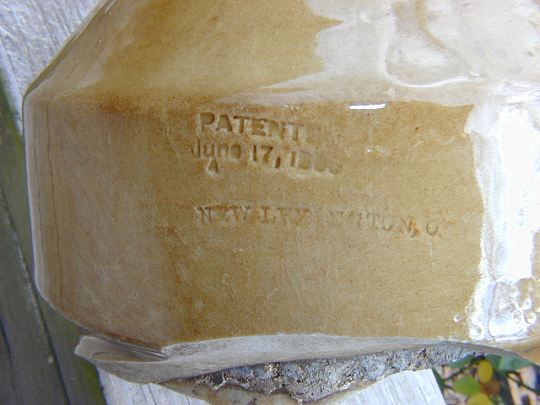
Note the "4" struck below "June". It is not part of the
marking, but may be a manufacturing code number denoting a trimmer operator.
Some years ago, Steve Jones gave me a beautiful unmarked top to M-3890. It
was found at a dumpsite along the Niagara line along with a lot of broken M-3250's and other early insulators when Steve, Ken Willick, and Bob Berry were
searching the area. The beautiful speckled tan glaze is obviously New Lexington.
There are lots of drippy runs in the glaze and finger marks on the crown. The
top shell has a large piece broken off and glued back, but otherwise it is
almost mint with just a small chip.
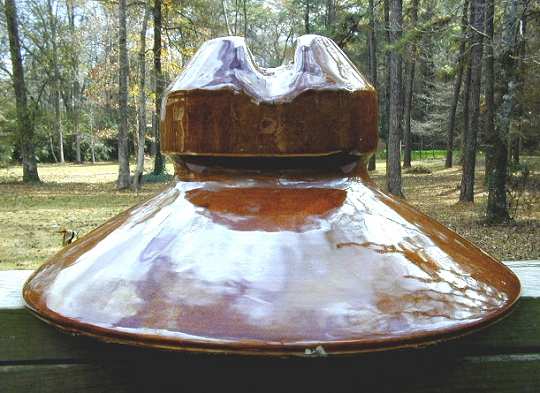
I recently obtained a Xerox copy of a 1907 Thomas catalog. There are lots of
early styles making it very interesting to look through and a great early
reference. It has an illustration of M-3890 with the measurements 14.5 x 19,
which is the same as for the drawing used for M-3890. However, there is a second
size listed with the illustration that has the size 14.5 x 20. We may never know
what that one looks like for sure. We can only assume it is the same basic
shape. On the next page is an illustration that matches the M-3890A specimen as
far as crown detail. However, the size is listed as 14.5 x 19. That is the same
as M-3890, but one inch shorter than M-3890A. We now know Thomas cataloged the
large crown style, but the height measurement doesn't match with the specimen of
M-3890A. Maybe the second one listed with the M-3890 illustration is the
specimen we now call M-3890A. If we could remove the wooden pin still stuck in
M-3890A, maybe we could tell if it has a 1" pinhole or 1-3/4" pinhole.
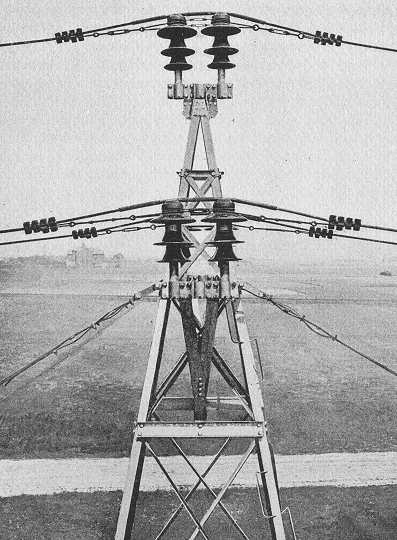
There is no surprise that few M-3890's and ? survived. The
extremely long inner bell-shaped skirt must have been very fragile making it
susceptible to breakage from both horizontal strains and cement expansion. More
importantly, the larger height to diameter ratio of M-3890 resulted in it being
easily damaged by lightning strikes and flashovers from nearby lightning
strikes. Forty percent of the insulators on a duplicate line for the Niagara,
Lockport and Ontario Power Co. line failed a three-minute flash-over test at 195,000 volts. The tests were conducted after several hundred
insulators on the primary line were damaged during summer lightning storms in
1906-1908. Over 81 % of the insulators that failed involved the long center
shell.
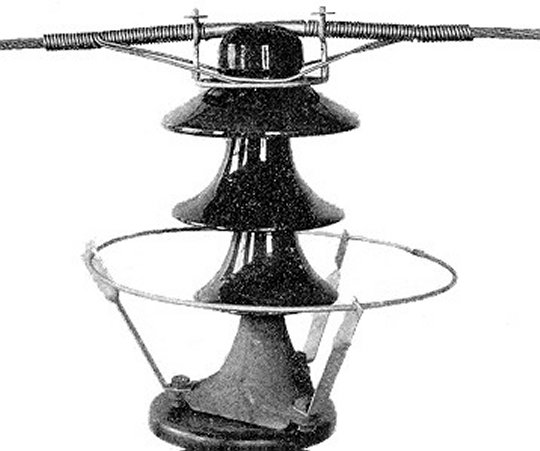
The numerous failures of the the tall M-3890 lily-shell style brought a quick
end to this beautiful style. As a side note, the Nicholson arcing ring was
developed in an effort to protect the M-3890's on the line. In 1909, the shorter
4-part, gray Victor cross-top, M-4338, was used to replace the top M-3890 on
each pole. It proved better suited for the service by providing a more balanced
distribution of voltage. This was accomplished by the shorter design, which, to
prevent damage to the insulator, allowed surface creepage rather than flashover
and puncture.
| 